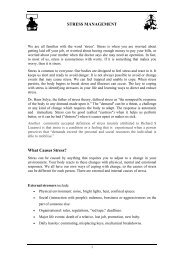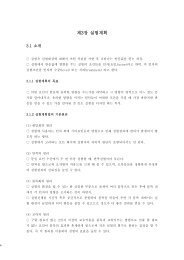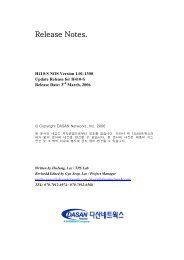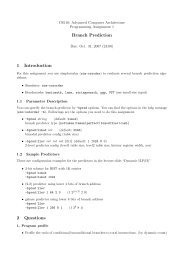"Teaching Smart People How to Learn," by Chris Argyris
"Teaching Smart People How to Learn," by Chris Argyris
"Teaching Smart People How to Learn," by Chris Argyris
- No tags were found...
Create successful ePaper yourself
Turn your PDF publications into a flip-book with our unique Google optimized e-Paper software.
<strong>Teaching</strong> <strong>Smart</strong> <strong>People</strong> <strong>How</strong> <strong>to</strong> <strong>Learn</strong> · ARGYRIS6the manager believed the team had not created the value added that it was capable of andthat the consulting company had promised. In the spirit of continuous improvement, hefelt that the team could do better. Indeed, so did some of the team members.The manager knew how difcult it was for people <strong>to</strong> reect critically on their ownwork performance, especially in the presence of their manager, so he <strong>to</strong>ok a number ofsteps <strong>to</strong> make possible a frank and open discussion. He invited <strong>to</strong> the meeting an outsideconsultant whom team members knew and trusted—‘‘just <strong>to</strong> keep me honest,’’ he said.He also agreed <strong>to</strong> have the entire meeting tape-recorded. That way, any subsequent confusionsor disagreements about what went on at the meeting could be checked againstthe transcript. Finally, the manager opened the meeting <strong>by</strong> emphasizing that no subjectwas off limits—including his own behavior.‘‘I realize that you may believe you cannot confront me,’’ the manager said. ‘‘But Iencourage you <strong>to</strong> challenge me. You have a responsibility <strong>to</strong> tell me where you think theleadership made mistakes, just as I have the responsibility <strong>to</strong> identify any I believe youmade. And all of us must acknowledge our own mistakes. If we do not have an opendialogue, we will not learn.’’The professionals <strong>to</strong>ok the manager up on the rst half of his invitation but quietlyignored the second. When asked <strong>to</strong> pinpoint the key problems in the experience with theclient, they looked entirely outside themselves. The clients were uncooperative and arrogant.‘‘They didn’t think we could help them.’’ The team’s own managers were unavailableand poorly prepared. ‘‘At times, our managers were not up <strong>to</strong> speed before theywalked in<strong>to</strong> the client meetings.’’ In effect, the professionals asserted that they were helpless<strong>to</strong> act differently—not because of any limitations of their own but because of thelimitations of others.The manager listened carefully <strong>to</strong> the team members and tried <strong>to</strong> respond <strong>to</strong> theircriticisms. He talked about the mistakes that he had made during the consulting process.For example, one professional objected <strong>to</strong> the way the manager had run the project meetings.‘‘I see that the way I asked questions closed down discussions,’’ responded themanager. ‘‘I didn’t mean <strong>to</strong> do that, but I can see how you might have believed that I hadalready made up my mind.’’ Another team member complained that the manager hadcaved in <strong>to</strong> pressure from his superior <strong>to</strong> produce the project report far <strong>to</strong>o quickly, consideringthe team’s heavy work load. ‘‘I think that it was my responsibility <strong>to</strong> have saidno,’’ admitted the manager. ‘‘It was clear that we all had an immense amount of work.’’Finally, after some three hours of discussion about his own behavior, the managerbegan <strong>to</strong> ask the team members if there were any errors they might have made. ‘‘Afterall,’’ he said, ‘‘this client was not different from many others. <strong>How</strong> can we be moreeffective in the future?’’The professionals repeated that it was really the clients’ and their own managers’fault. As one put it, ‘‘They have <strong>to</strong> be open <strong>to</strong> change and want <strong>to</strong> learn.’’ The more themanager tried <strong>to</strong> get the team <strong>to</strong> examine its own responsibility for the outcome, the morethe professionals <strong>by</strong>passed his concerns. The best one team member could suggest wasfor the case team <strong>to</strong> ‘‘promise less’’—implying that there was really no way for the group<strong>to</strong> improve its performance.The case team members were reacting defensively <strong>to</strong> protect themselves, even thoughtheir manager was not acting in ways that an outsider would consider threatening. Evenif there were some truth <strong>to</strong> their charges—the clients may well have been arrogant andclosed, their own managers distant—the way they presented these claims was guaranteed<strong>to</strong> s<strong>to</strong>p learning. With few exceptions, the professionals made attributions about the behaviorof the clients and the managers but never publicly tested their claims. For instance,they said that the clients weren’t motivated <strong>to</strong> learn but never really presented any evidencesupporting that assertion. When their lack of concrete evidence was pointed out <strong>to</strong>them, they simply repeated their criticisms more vehemently.If the professionals had felt so strongly about these issues, why had they never mentionedthem during the project? According <strong>to</strong> the professionals, even this was the fault ofothers. ‘‘We didn’t want <strong>to</strong> alienate the client,’’ argued one. ‘‘We didn’t want <strong>to</strong> be seenas whining,’’ said another.The professionals were using their criticisms of others <strong>to</strong> protect themselves from thepotential embarrassment of having <strong>to</strong> admit that perhaps they <strong>to</strong>o had contributed <strong>to</strong> theVolume 4, Number 2, REFLECTIONS






![Finale 2006 - [autumn leaves.MUS]](https://img.yumpu.com/46046993/1/184x260/finale-2006-autumn-leavesmus.jpg?quality=85)









